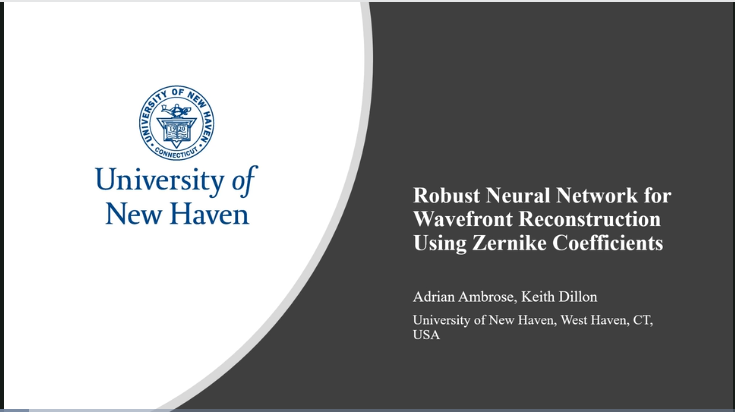Accurately measuring optical aberrations is an important process for several eyecare tasks. Managing the individual variations found in human eyes plays a large role in properly defining these aberrations. A common method to measure optical aberrations uses sensors to locally capture the gradients across a grid of points. This data is used to reconstruct the wavefront resulting from light passing through the eye. In using this method of measurement, typical individual variations such as scarring or eyelashes can lead to shortcomings in the data. These shortcomings can manifest as noise or even areas of entirely missing data. The use of ANN (artificial neural networks) is one way to minimize the effects of these unpredictable deviations.
In this work, ANN’s were used to determine higher order Zernike coefficients based on coordinates and gradients of the wavefront at those locations. To accomplish this, different ANN architectures were evaluated using sets of ideal inputs to establish the best performing baseline model. This baseline model was then compared with models that were trained under varying conditions created by incorporating deviations from ideal samples. By training neural networks using variable quality data, models can be created to reconstruct wavefronts and account for these conditions. This in turn, can lead to useful applications when measuring for aberrations resulting from the eye.
Presentation video can be viewed at conference website, linked here:
Adrian Ambrose, Keith Dillon, Proceedings Volume 11511, Applications of Machine Learning 2020; 115110N (2020) https://doi.org/10.1117/12.2568034
Event: SPIE Optical Engineering + Applications, 2020, Online Only
